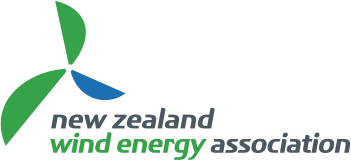For the membership year April 2021 to March 2022
The outlook for wind energy can only be regarded as exceptional. There is an exciting pipeline of development activity for both onshore and offshore wind with much more required to decarbonise the energy sector.
Of particular note is that, based on the Climate Change Commission and Transpower forecasts, up to 27 new wind farms will be required by 2035 and over 50 by 2050 assuming an average wind farm size of 100 MW. Wind Energy is forecast to meet up to 28% of total demand and have a capacity of around 6,500 MW.
This scale of required electricity infrastructure development is unprecedented in New Zealand’s history and a key challenge in meeting such a large growth forecast will be ensuring policies across the energy sector, climate change and environmental domains align to support new build activity.
The wind industry itself also needs to position the sector to support the projected growth with a sustained pipeline of projects ready to be built as demand increases in a global environment with accelerating demand that faces both labour and material shortages.
In this review we look back over the past year, update the domestic and international outlook, provide an overview of NZWEA’s activities, priorities for 2022 and an overall summary.
The Association’s strategy is to focus on three key areas:
- Leveraging New Zealand's emissions reduction imperative to enable the energy transition to renewables, particularly wind energy.
- Optimising wind energy’s position and ensuring the regulatory environment supports wind farm development.
- Expanding the opportunity for wind energy development to enable community and industrial projects including wind's integration with other technologies.
The imperative to strengthen the resource management system to recognise the national importance of renewable electricity generation and enable transmission remains urgent.
With the right policy settings, including actions to reduce emissions, the abundance of economic renewable resources in New Zealand can be developed to support a sustained growth in electricity demand.
Decarbonisation of the energy sector beckons, and it is clear that the wind industry is at the forefront of an exciting future contributing towards New Zealand meeting its climate change goals.
Click link below to read the 2021 / 22 year in review report.


